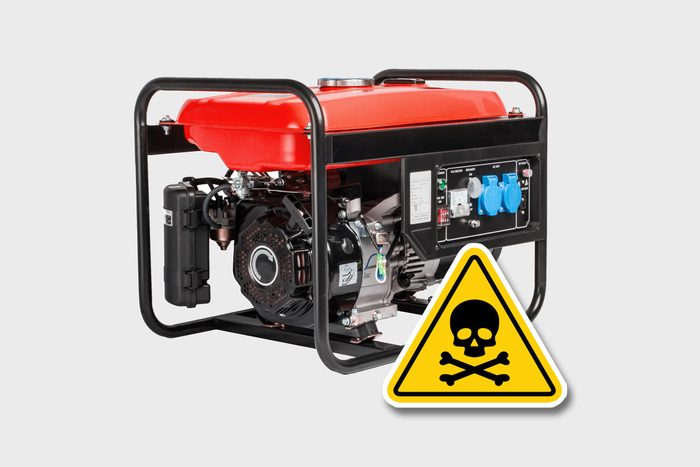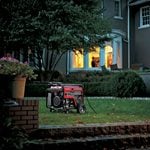CPSC Warning: Carbon Monoxide Deaths Due To Generators

One portable generator can produce the same amount of carbon monoxide as hundreds of cars. The CPSC underscores the danger of generating backup power.
With people increasingly relying on portable generators for backup power, the Consumer Product Safety Commission (CPSC) has issued a warning: Gasoline-powered portable generators create a risk of carbon monoxide (CO) poisoning that can kill in minutes.
The warning comes in the midst of record-breaking summer heat waves that fuel wildfires and intensify demand for electricity to run air conditioners. It applies year-round.
On This Page
Report’s Generator-Linked Carbon Monoxide Findings
Using data collected from 2017 to 2019, the CPSC report states that “about 85 consumers die in the U.S. each year from CO poisoning caused by gasoline-powered portable generators.” It goes on to say about 81 percent of the deaths occurred in residential settings.
The study found that, among the households reporting fatalities, the three top reasons for generator use were weather-related power outages, power shutoffs and providing power to temporary locations like cabins and campgrounds. The report cites poor ventilation as an important contributing factor.
A single generator produces as much carbon monoxide as hundreds of cars, according to the report. Because CO is odorless and colorless, it’s possible to inhale a fatal dose and lose consciousness before exhibiting symptoms of poisoning, which include dizziness, nausea and weakness. The Centers for Disease Control and Prevention (CDC) confirms CO inhalation silently kills hundreds of people each year.
Using a Generator Safely
The top takeaway from the CPSC report: Ensure proper ventilation whenever you use a portable generator. Two basic rules apply:
- Never use a generator indoors, not even in a garage, outbuilding or tent.
- Always keep the generator at least 20 feet from the house and far from doors and windows.
It can be tempting to run a generator on a porch or an unused part of the house, especially when it’s raining. Don’t. Generac, a leading generator manufacturer, says it’s impossible to provide adequate ventilation in an enclosed space, even if you open all the windows and run a fan.
If you must run a generator during heavy rain, put it under the overhang of a shed or garage roof as far as possible from windows. You could also put it under a table, or build a makeshift roof with four posts and open sides — not a lean-to. Never cover a generator with a tarp or set it in an enclosed space.
The CPSC report provides additional safety instructions for generator use:
- Maintain the generator regularly to minimize emissions. Routine maintenance should include cleaning the air filter before each use, topping off the oil, frequently cleaning or replacing the spark plug and following all safety instructions in the owner’s manual.
- Purchase a generator with an automatic CO shutoff. Per the CPSC report, models conforming to the latest safety standards can prevent 87 to 100 percent of deaths from CO poisoning.
- Install battery-operated CO detectors or hardwired detectors with battery back-up on each level of your home and in all sleeping areas. Test the CO detectors monthly, replace batteries when needed and never ignore the alarm when it sounds.
Additional Generator Safety Tips
Operating a gas-powered machine to generate electricity is inherently hazardous, so you should read and understand all the safety precautions in your owner’s manual. In addition, follow these safety tips:
- Avoid gas spills. Don’t overfill the tank, and don’t add gas while the unit is running. The Red Cross recommends turning the unit off and letting it cool before adding gas.
- Don’t smoke or use lighters near a running generator.
- Don’t touch any part of the motor while the generator is running. The metal is hot enough to burn you.
- Plug appliances directly into the generator or use a heavy-duty outdoor extension cord rated for the total current draw of all appliances plugged into it.
- Don’t feed a generator directly into your electrical panel yourself. Leave that to an electrician, who will install a transfer switch that disconnects the panel from the grid while the generator runs.



